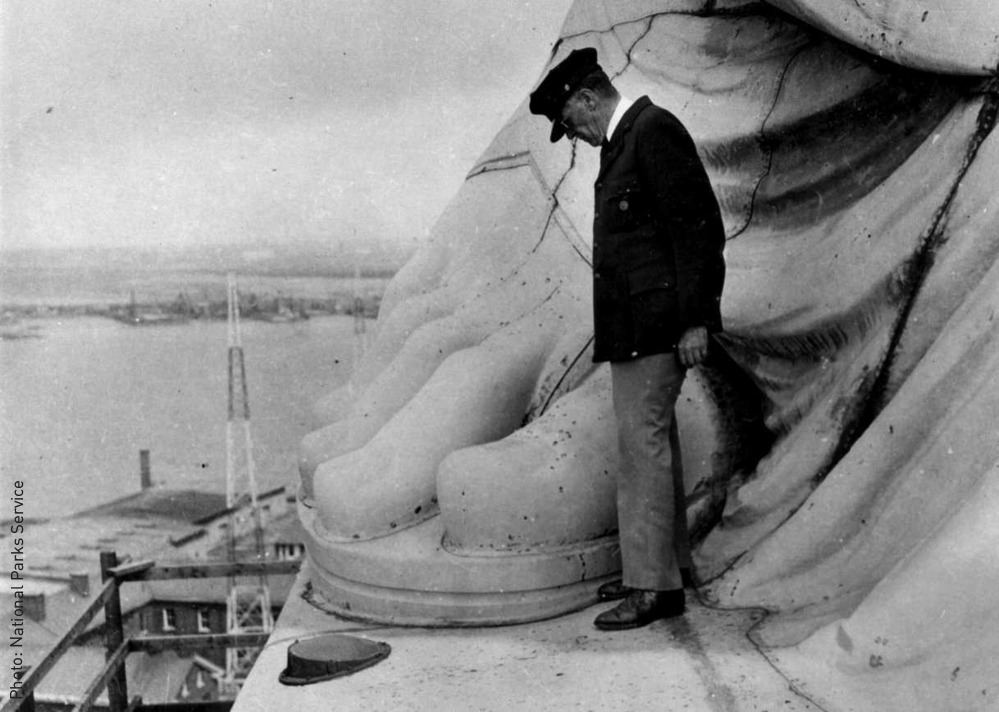An icon of freedom, The Statue of Liberty has welcomed all who have come to New York Harbor for the past 132 years. Over four million visitors pass through The Battery each year as they make their way to see Lady Liberty, one of New York’s star attractions.
1. The original model may have been an Egyptian woman
Many historians say that the Statue of Liberty was modeled after Libertas, the Roman goddess of freedom. However, sculptor Frédéric-Auguste Bartholdi was first inspired by the colossal figures guarding Nubian tombs. He developed a lifelong passion for large-scale public monuments. In his proposal for the Suez Canal, Bartholdi designed a monumental statue of a robe-clad woman representing Egypt to stand at Port Said, at the northern end of the canal. A prototype for the statue was titled “Egypt Carrying the Light to Asia.”
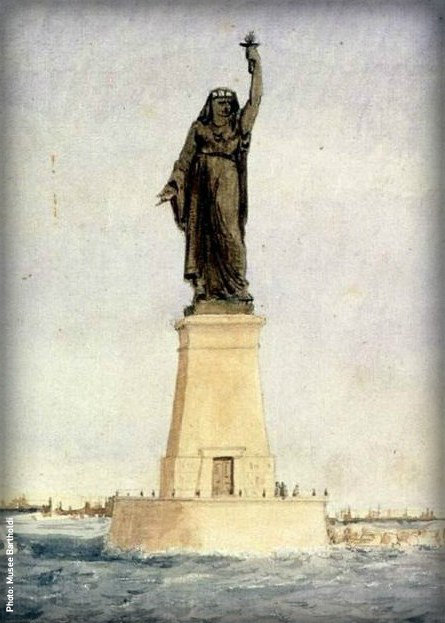
The proposal was eventually scrapped due to its high cost but the designs would find a home elsewhere. The female figure in the Port Said design evolved into the goddess who would become “Liberty Enlightening the World.”
2. She’s pretty thin-skinned
The Statue of Liberty is covered with a layer of copper that is very thin – about the depth of two pennies pressed together. When she was assembled on Bedloe’s Island, she was a beautiful brown color, and stayed this way for around 35 years. By 1920, the copper skin had begun to oxidize and turn the lovely sea green we know today.
Towering 879 feet atop her pedestal, Lady Liberty has a 35-foot waistline, stands 305 feet tall, and wears a size 879 shoe.
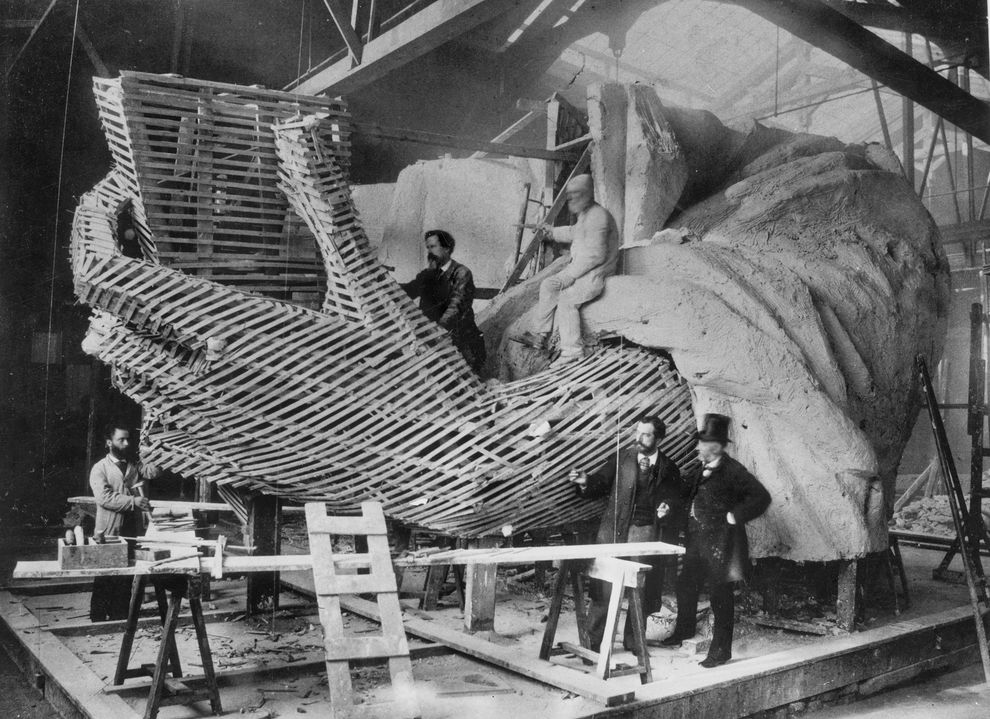
3. The Statue’s pedestal was financed by an early crowdfunding effort
The government of France paid for the statue with the understanding that Americans would raise the funds for her pedestal, faced with pink Stony Creek granite. Governor Grover Cleveland refused to use state funds, Congress couldn’t agree on an amount, and a dedicated fundraising committee fell short by a third.
As Baltimore, Philadelphia, San Francisco and Boston all started eyeing the sculpture for their own cities, Joseph Pulitzer devised a solution: he would print the names of each person who made a contribution and offer rewards to the largest contributors. In just five months, the campaign had raised $101,091 from over 160,000 donors including children, street cleaners and politicians, with more than 75% of donations in amounts of less than a dollar. Finally, they could move forward – $100,000 covered the last of the pedestal’s cost, and the rest was given as a gift to the sculptor.
Since 1998 The Battery Conservancy designed granite into the rebuilding of the park, connecting it visually and emotionally to the statue. The stone, extracted from the same quarry as the pedestal, is now a signature feature throughout The Battery – from benches facing the harbor to the seating walls and pavement that marks its perimeter.
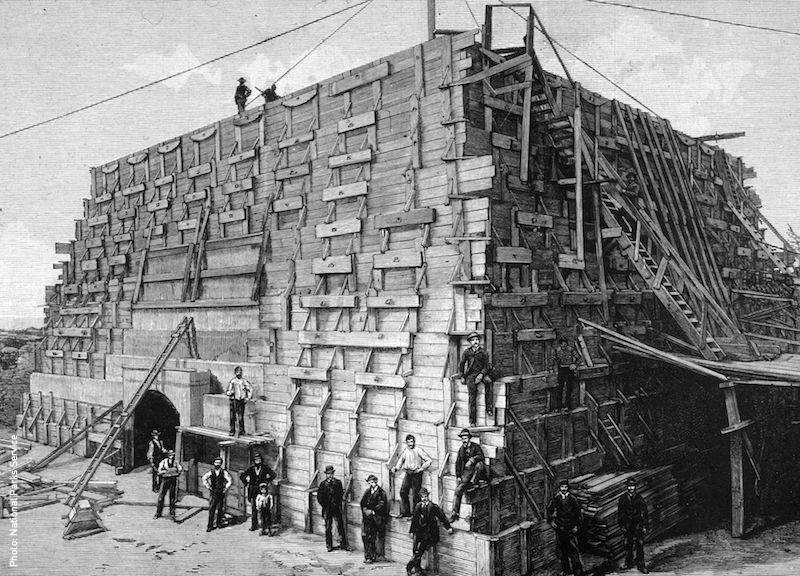
4. The gift was intended to celebrate abolition in the U.S.
In the 1870s, French abolitionist Édouard de Laboulaye joined forces with sculptor Frédéric Bartholdi and renowned engineer Gustave Eiffel to dream up a monumental gift for the United States. The statue would be a symbol of friendship between the two nations, and a celebration of the end of slavery. De Laboulaye quietly hoped that such a gift would inspire his own people to fight for their liberty. Napoleon III, had recently brought an end to the Second Republic remaining in power past his term and declaring himself Emperor of France.
At the time of Lady Liberty’s dedication, many African-American newspapers commented on the American hypocrisy they saw represented by the statue. Though slavery had ended, Jim Crow laws in the South and the less explicit but equally oppressive and exclusionary tactics in the North denied African-Americans the equality, justice and liberty for all that our nation purported to uphold. Bartholdi originally designed Lady Liberty holding broken chains, but later deemed the explicit reference to slavery too controversial. Instead, a broken chain and shackles lie at the statue’s feet, delivering the abolitionist message more subtlety.
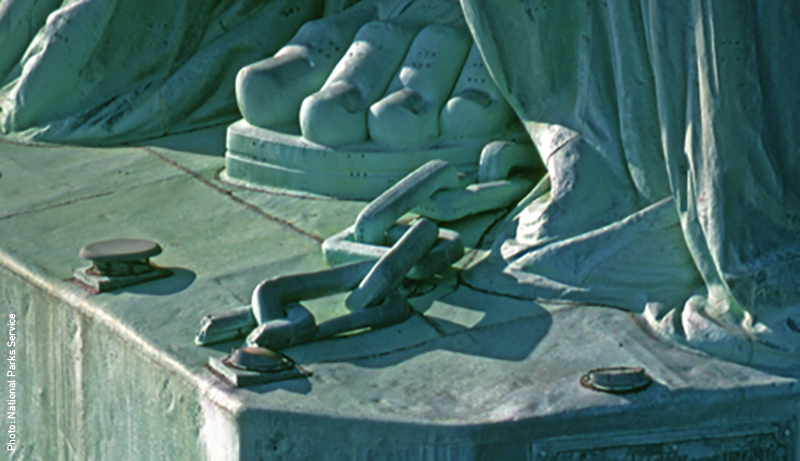
5. A spy caper made her torch unsafe for visitors to climb
Many believe that normal wear and tear weakened the torch enough that visitors may no longer climb up to its balcony, but the real reason is an explosion in World War I. On July 30th, 1916, German spies planted explosives in a munitions depot connecting Black Tom Island with Jersey City, blowing out windows as far away as Times Square.
The statue’s arm and torch were damaged by flying debris and weren’t repaired until 1984, when the torch was replaced and covered in 24-karat gold leaf. The original torch is now on display in the pedestal lobby.
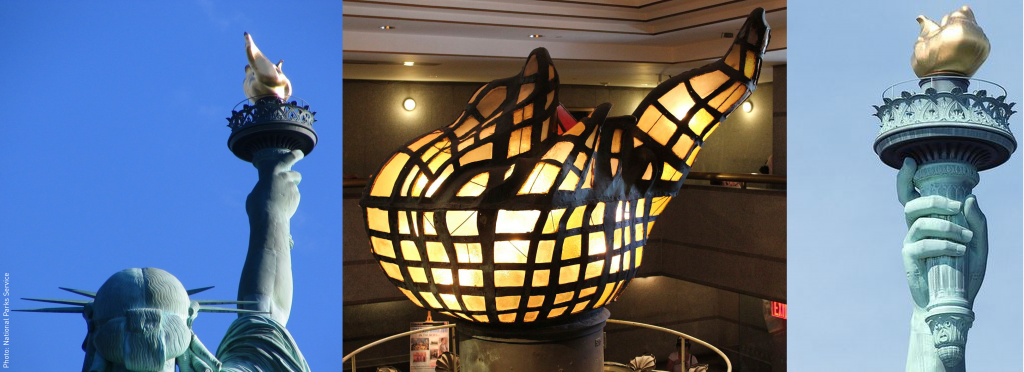
The torch was never reopened, but visitors looking for a view can still visit the crown with a reservation made at statuecruises.com.
6. She sways in the wind
Gustave Eiffel – famed for a certain iron tower which bears his name, created the statue’s unique skeleton. The iron structure at the core was the height of innovation at its time, capable of shifting in the wind without cracking or bending. Lady Liberty can sway up to three inches in any direction during heavy winds, while her torch can sway up to five inches.
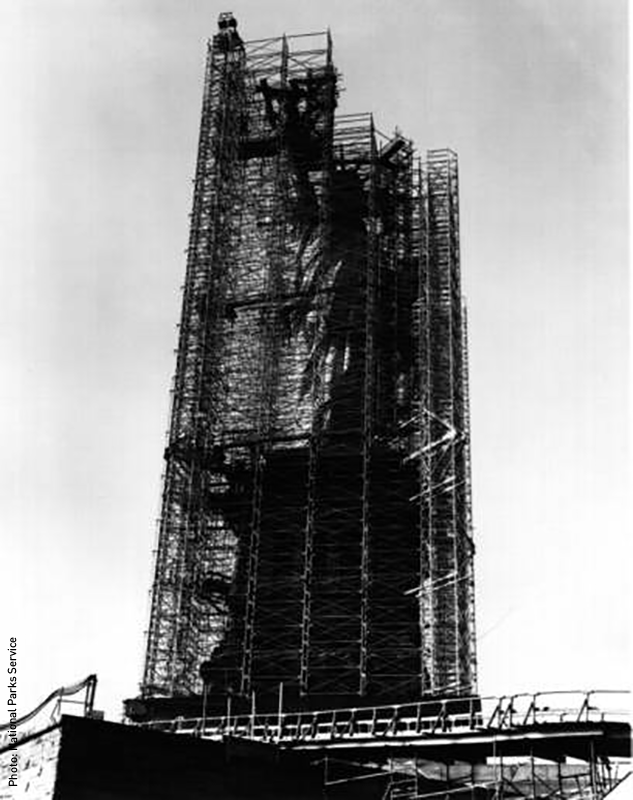
7. She’s a magnet for lightning bolts
By most estimates, the copper statue has been hit by 600 bolts of lightning every year since it was assembled in New York Harbor.
Jay Fine captured one spectacular bolt hitting her in 2010, making him the first to photograph this phenomenon.

8. Each element is symbolic
The book she carries features the date our Declaration of Independence was signed (July 4, 1776), while the seven points of her crown symbolize the seven seas, the seven continents and the rays of the sun. This image is meant to convey the hopeful spread of liberty around the world, and the example the U.S. was setting for other countries.
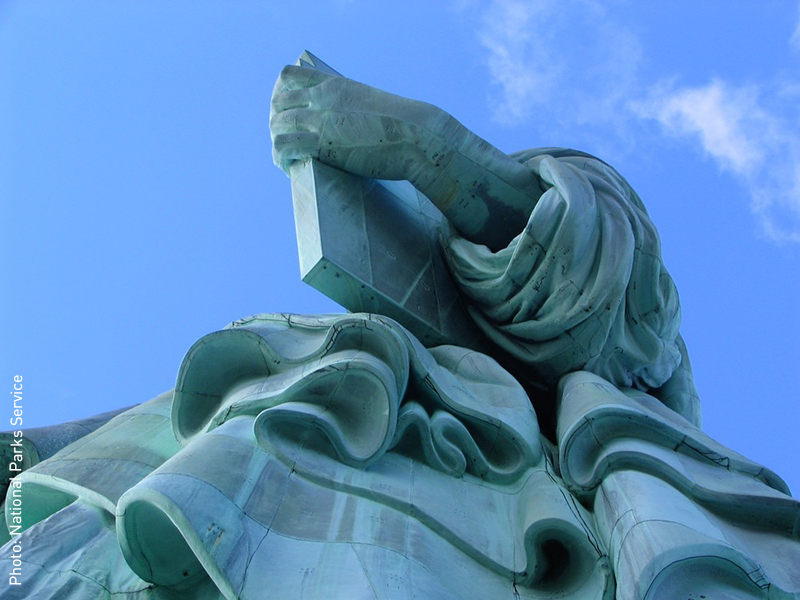
9. She was nearly a speaking statue
Thomas Edison, inventor of the light bulb and phonograph, proposed at one point that a giant gramophone be installed inside the Statue of Liberty, enabling her to “speak.” Ultimately, the idea was rejected.
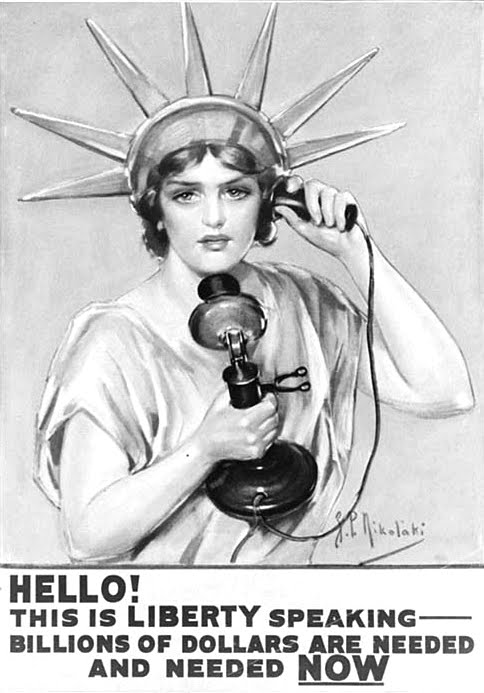
10. She’s on the move!
Although she is a statue, Lady Liberty is not standing still. Her right leg is in mid-stride and her right foot is actually leaving the ground. She’s marching forward, moving towards the horizon, forever leading the way and lighting the path to liberty and freedom. Dave Eggers mentions this in his wonderful book, Her Right Foot.
